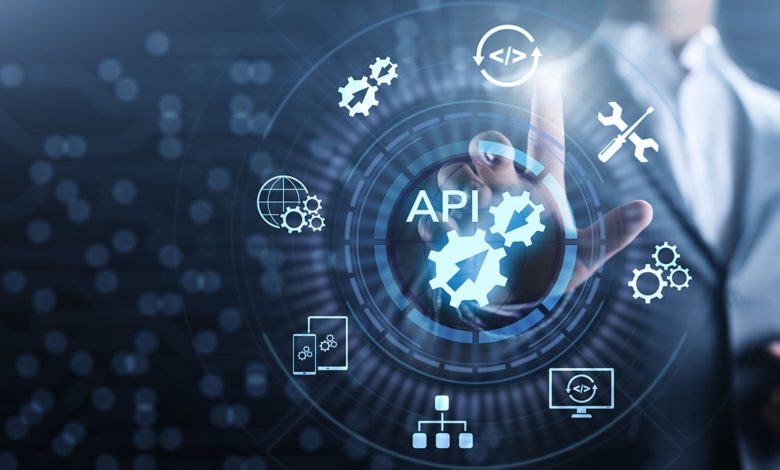An Application Programming Interface (API) is a set of defined rules that enable different applications to communicate with each other. APIs allow developers to sync data between multiple platforms and can facilitate communication among the various microservices in web applications.
They serve as intermediaries between disconnected applications, allowing for seamless integration and data exchange. APIs can be categorized into public, partner, internal, and composite APIs, each serving a specific purpose in connecting applications. Some examples of APIs include Twitter bots, login systems, weather snippets, payment gateways, and mapping services.
Overall, APIs play a crucial role in enabling software systems to interact and exchange information efficiently, enhancing the overall functionality and usability of applications.
How Apis Work
An API, or Application Programming Interface, is a set of defined rules that enable different applications to communicate with each other. APIs allow developers to sync data between multiple platforms and can facilitate communication among various microservices in web applications. They serve as an intermediary between disconnected applications, providing a way for them to share data and functionality. Unlike web services, which require a network to connect applications, APIs can function independently. There are different types of APIs, including public APIs, partner APIs, internal APIs, and composite APIs. Public APIs are open and available for use by any outside developer or business, while partner APIs are restricted to approved partners. Internal APIs are designed for internal use within an organization, and composite APIs combine multiple APIs into a single interface. Examples of APIs include Twitter bots, weather snippets, payment gateways like PayPal, and mapping services like Google Maps.
Types Of Apis
| Public APIs | Partner APIs | Internal APIs | Composite APIs |
|---|---|---|---|
| A public API is open and available for use by any outside developer or business. | Partner APIs are designed specifically for use by authorized partners. | Internal APIs are used within an organization, allowing different teams or departments to communicate and share data. | Composite APIs combine multiple functionalities from different APIs to provide a unified interface. |
APIs allow developers to sync data between multiple platforms and facilitate communication among various microservices in web applications. They serve as an intermediary between disconnected applications, enabling them to communicate with each other. While web services also connect applications, APIs are more widely accessible and can be used by any outside developer or business.
Some examples of APIs include Twitter Bots, Weather Snippers, Google Maps, and E-commerce integrations. APIs follow a set of defined rules that enable different applications to communicate with each other. They can be used in various programming languages such as Java, XML, HTTP, Python, and JavaScript.
In conclusion, understanding the different types of APIs can help developers choose the most appropriate one for their specific needs and requirements.
Benefits Of Api Integration
API integration offers numerous benefits, such as syncing data between multiple platforms and facilitating communication among different microservices in web applications. For instance, when you add a new contact in Salesforce, API integration automates the process of populating the information in Marketo as well.
This seamless integration enhances efficiency and streamlines workflows for businesses.
| Benefits of API Integration |
| APIs allow developers to sync data between multiple platforms and can facilitate communication among the various microservices in web applications. API integration is what does the work when, for example, you enter a new contact in Salesforce and it auto-populates to Marketo as well. By leveraging APIs, businesses can streamline processes, eliminate data silos, and improve overall efficiency. Furthermore, API integration enables seamless collaboration between different software systems, allowing companies to leverage the best features and functionalities of various platforms. Whether it’s syncing customer data, transferring information between applications, or automating workflows, API integration offers numerous benefits for businesses of all sizes. By adopting API integration, companies can better leverage the power of their software ecosystem and improve the overall user experience. |
Examples Of Apis
APIs are essential in enabling various applications to communicate with each other through a set of defined rules. Examples of APIs include Twitter bots, weather snippers, Google Maps, and e-commerce platforms. These APIs facilitate data synchronization between multiple platforms, making it easier for developers to integrate different services.
Examples of APIsTwitter Bots: Twitter provides an API that allows developers to create bots that can perform various actions on the platform, such as tweeting, following users, and analyzing trends.
– Log-In Using XYZ: Many websites and applications offer the option to log in using third-party APIs like XYZ. This enables users to sign in with their XYZ credentials without having to create a new account.
– Weather Snippers: API integrations with weather data providers allow developers to fetch weather information and display it on their applications. This can be useful for planning outdoor activities or displaying real-time weather conditions.
– Pay with PayPal: PayPal offers an API that allows businesses to integrate PayPal payment functionality into their websites or applications. This enables seamless and secure online transactions.
– Google Maps: The Google Maps API allows developers to embed maps and location-based services into their applications. This can include displaying maps, getting directions, and searching for places.
– Travel Booking: APIs provided by travel booking platforms like Expedia or Booking.com allow developers to integrate travel booking functionality into their own applications. This enables users to search and book flights, hotels, and other travel services.
– E-Commerce: Many e-commerce platforms offer APIs that enable developers to create custom integrations with their online stores. This can include retrieving product information, managing inventory, and processing orders.
APIs are essential tools for developers to connect different applications and platforms, allowing for seamless data exchange and enhanced functionality. These examples demonstrate the versatility and benefits of utilizing APIs in various industries.
Api References And Parameters
API references and parameters are essential components of an application programming interface. They provide detailed information about how to interact with the API and the specific parameters that can be used in API requests. Understanding API references and parameters is crucial for developers to effectively utilize APIs in their applications.
Parameters, on the other hand, are an integral part of API requests. They allow developers to customize and control the behavior of the API. Parameters can be used to filter or sort data, specify the number of results to return, or provide additional options for API calls. Understanding the available parameters is crucial for making API requests that return the desired results.
In summary, API references provide the necessary information to understand the functionality of an API, while parameters allow developers to customize their API requests to suit their specific needs. By familiarizing themselves with both references and parameters, developers can make the most out of the APIs they are working with.
Case Study: Api Integration In Banking
Learn about the case study of API integration in banking, where Application Programming Interfaces (APIs) are utilized to sync data between multiple platforms and facilitate communication among various microservices in web applications. API integration allows for seamless data transfer, such as entering a new contact in Salesforce and automatically populating it in Marketo.
API integration in the banking industry has become increasingly important as banks strive to provide seamless and convenient services to their customers. APIs, or Application Programming Interfaces, allow different software systems to communicate with each other, making it possible for banks to integrate their services with third-party applications and platforms.
There are several benefits of API integration for banks. Firstly, it enables banks to offer a wide range of services to their customers, without having to develop all the necessary software themselves. For example, through API integration, a bank can offer customers the ability to make payments through popular digital payment platforms.
Secondly, API integration allows banks to improve their operational efficiency. By integrating their systems with external applications, banks can automate processes and reduce the need for manual intervention. This not only saves time but also reduces the risk of errors and improves overall customer experience.
Additionally, API integration provides banks with the opportunity to collaborate with fintech startups and other third-party developers. This collaboration allows banks to tap into innovative solutions and stay competitive in the rapidly evolving banking industry.
In conclusion, API integration is a valuable tool for banks, enabling them to offer a wide range of services, improve operational efficiency, and collaborate with external parties for innovation. By leveraging APIs, banks can provide seamless and convenient services to their customers in today’s digital age.
Full Form And Certification Of Api
API stands for Application Programming Interface. It is a set of defined rules that enable different applications to communicate with each other. APIs allow developers to sync data between multiple platforms and can facilitate communication among various microservices in web applications. There are different types of web APIs, including public APIs, partner APIs, internal APIs, and composite APIs.
Understanding the full form of API is important for developers and businesses in order to leverage its capabilities in their software development and integration processes. Additionally, there are certification options available for API development, which can help developers showcase their expertise in API design, development, and management.
By obtaining API certifications, developers can enhance their skills and credibility in the industry, and businesses can have confidence in the API solutions they are implementing.

Credit: blogs.opentext.com
Frequently Asked Questions For Application Programming Interface
What Is An Api With Example?
An API, or Application Programming Interface, is a set of rules that allows different applications to communicate with each other. For example, API integration can sync data between platforms, such as when entering a new contact in Salesforce and it auto-populates to Marketo as well.
APIs enable communication among various microservices in web applications.
What Are The 4 Types Of Api?
There are four types of API: public APIs, partner APIs, internal APIs, and composite APIs. Public APIs are open to any outside developer or business. Partner APIs are for approved partners only. Internal APIs are used within an organization. Composite APIs combine multiple APIs into one.
What Is Api How It Works?
An API (Application Programming Interface) is a software component that connects two separate applications. It allows communication between them without requiring a network, unlike web services. APIs can sync data and facilitate communication among various microservices in web applications.
What Are Some Examples Of Application Programming Interfaces?
Some examples of application programming interfaces (APIs) include Twitter Bots, Log-In Using XYZ, Weather Snippers, Pay with PayPal, and Google Maps. APIs are sets of rules that enable different applications to communicate with each other.
Conclusion
An Application Programming Interface (API) serves as a vital bridge between various applications, allowing for seamless communication and data synchronization. APIs can facilitate integration among different platforms and streamline processes in web applications. With different types of APIs available, such as public, partner, internal, and composite APIs, developers have the flexibility to choose the most suitable option for their project requirements.
APIs work as intermediaries, ensuring efficient and secure communication between disconnected applications. Embracing the power of APIs can significantly enhance productivity and functionality in today’s tech-driven world.
- Get Tips & Trick daily





